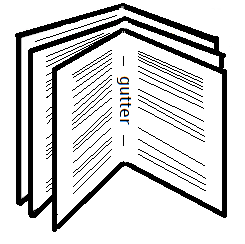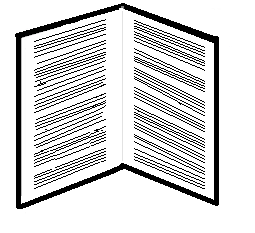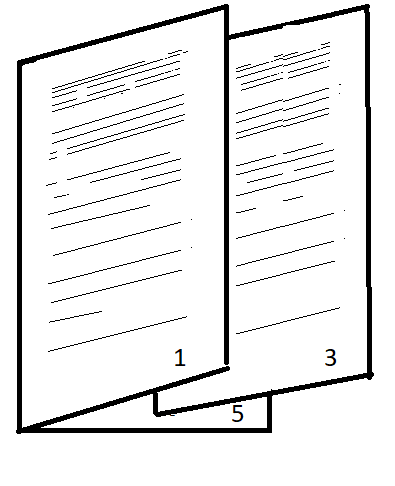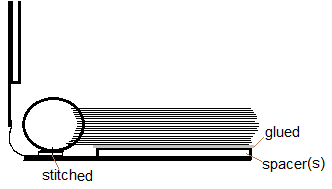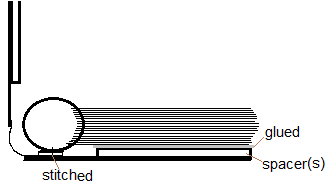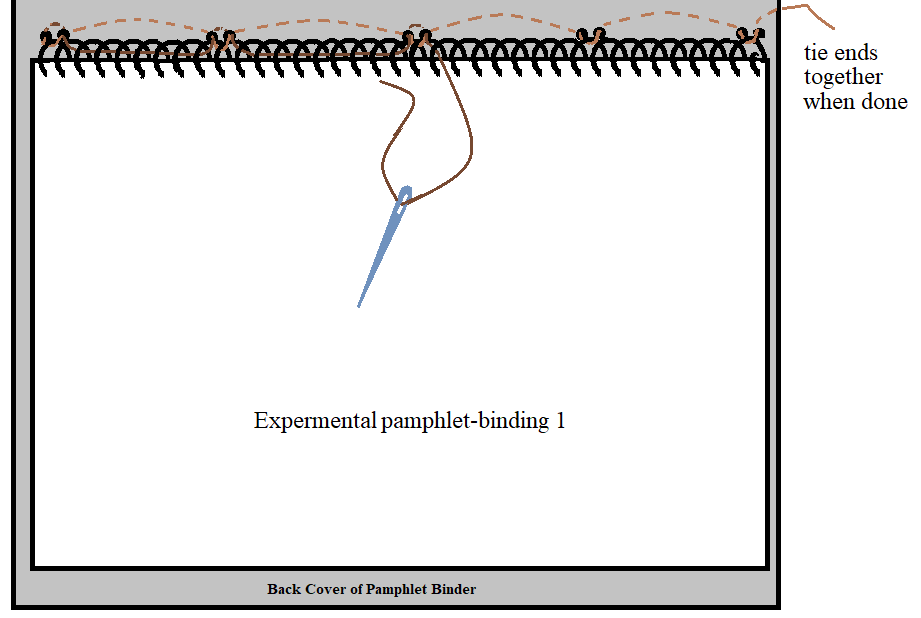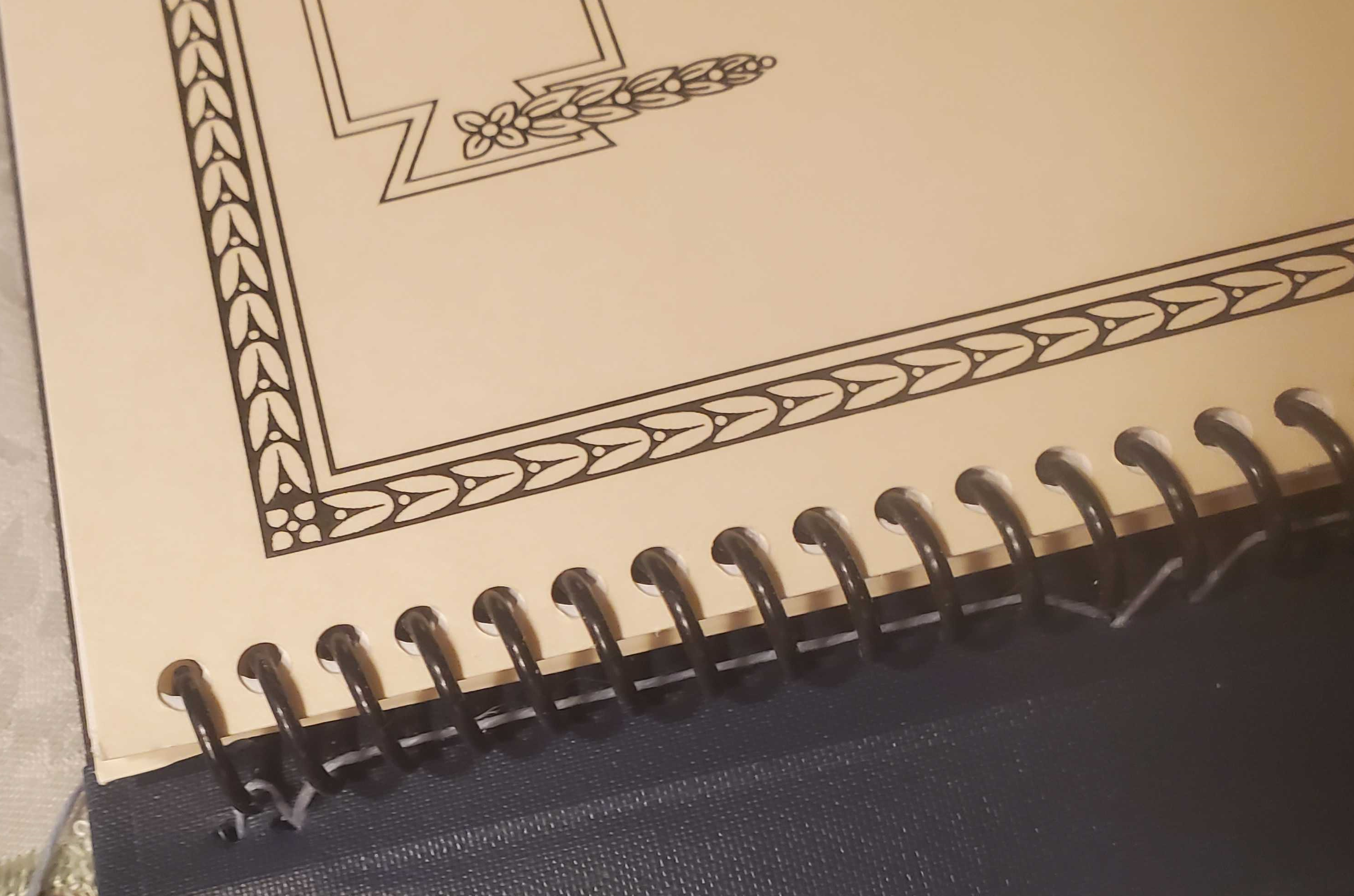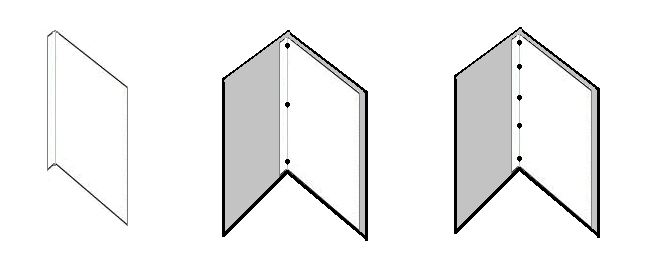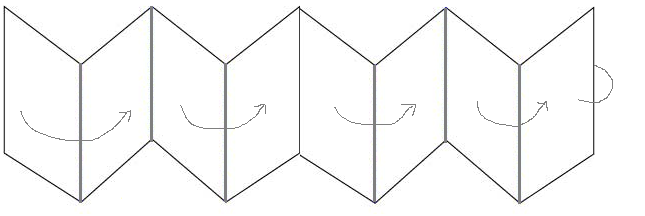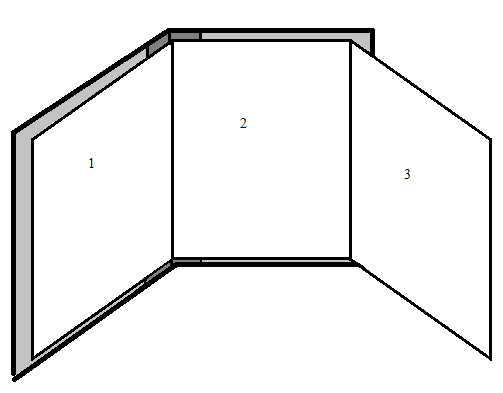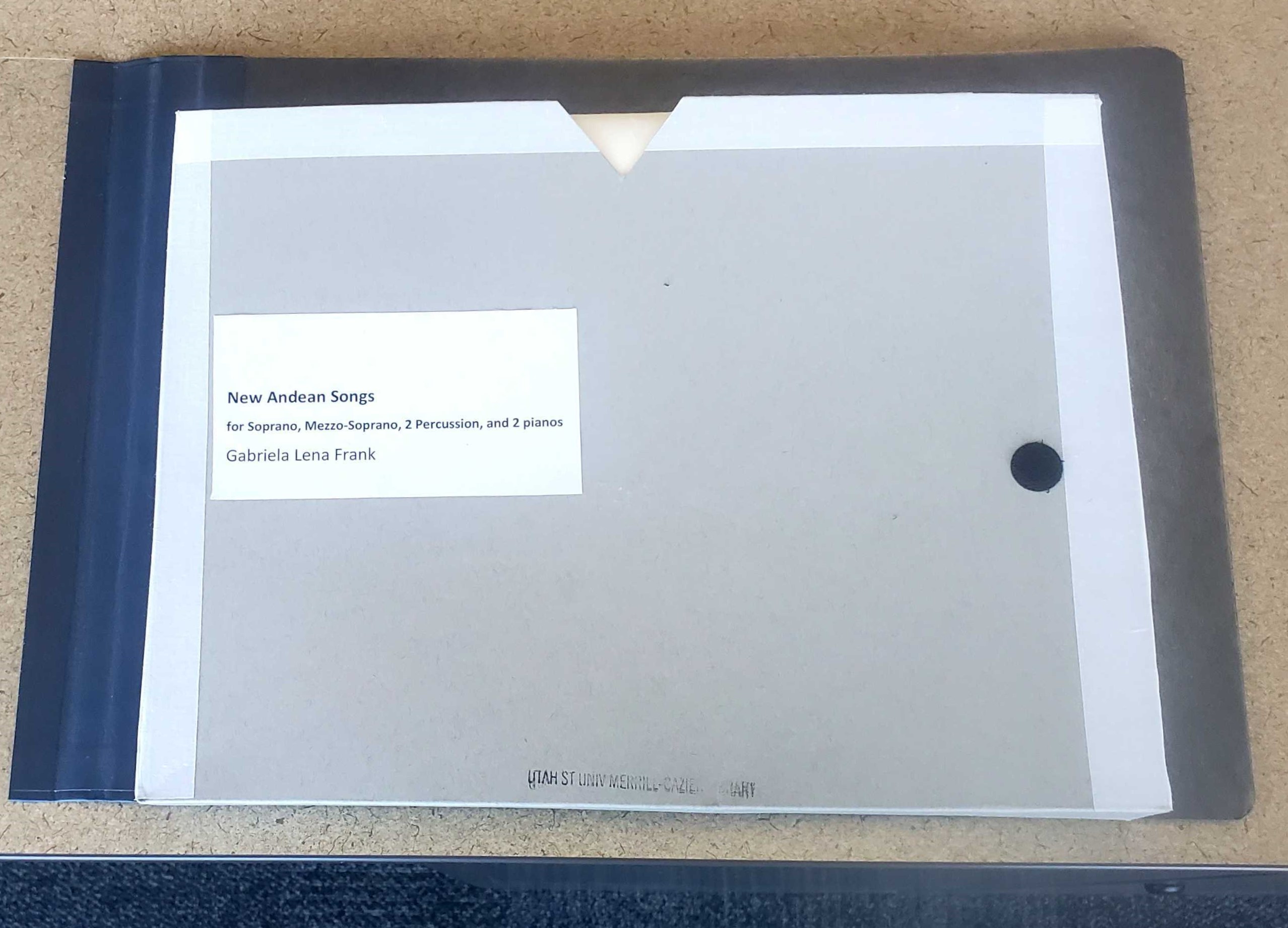Created: 8/19/2021-3/15/2023
...
MBQB-11-A (zero spine) 9 1/2” x 12-1/4” Clear front
MBQB-2-B (1/8 spine) 10” x 13-1/4” Clear Front
Resupplies for both: https://archival.com/quickbindmusic.html
Music Binder Spine Wraptm – using our remaining supply of these for extra thick single-signature scores that won’t lay flat in the regular binders
Resupplies: instead of spine wraps, just order Quick Binders, as above (see 1.b.), but with thicker spine: -B (1/8” spine) or -C (1/4” spine).
Our Spine Wrap Binders came with a wider spine than the Quick Binds, so we’ve been using for scores & parts with thick spines (instead of their listed use)
Alternate supplier for pre-made binders: Gaylord Archival- 2023 prices
Gaylord Archival® Classic™ 1/4" Double Cloth Spine Sew or Staple Music Binder with Clear Cover & Diagonal Pocket
size: 9” W x 12. 1/4” H
part no: MCB912VD
$16.41
Gaylord Archival® Classic™ 1/4" Double Cloth Spine Sew or Staple Music Binder with Clear Cover & Diagonal Pocket
size: 10” W x 13 1/4 H
part no.: MBC1013VD
$17.53
...
Binding Needle, Linen Binding Thread, Awl, and Beeswax
Resupply is from Gaylord Archival (https://www.gaylord.com/c/Repair-Tools-and-Supplies) or TALAS.
A dissection tool can be used in place of an awl for poking holes (and is usually available through the USU Campus Bookstore)
Metal Ruler, Triangle or Carpenter Square, Pointed Bone Folder for measuring and scoring (locally supplied)
Card-Weight Paper (supplies can be found locally)
we are currently using pads of Toned Grey Strathmore Mixed Media, 18 x 24 inch.
Binder tape (without adhesive) for making our own binders, and with adhesive for many other uses.
Pamphlet Boards for making odd-shaped binders (two possibilities for resupplies):
Available at Gaylord Archival as 60 pt. Blue/Grey Barrier Board Sheets (25-Pack) 18” x 24” or Part #BG1824-2 here: https://www.gaylord.com/Preservation/Conservation-Supplies/Boards-%26-Paper/Gaylord-Archival%26%23174%3B-60-pt-Blue-Grey-Barrier-Board-Sheets-%2825-Pack%29/p/HYB00951
$133.30 per 25 sheets (this is our usual source)
OR as High-Density Acrylic-Coated Dark Gray Pamphlet Board - they are huge (39 x 40 inches), so we may want them to cut them to 18 x 24 inch (it will cost extra): https://archival.com/archivalboards.html#darkgrey - #DGPB .056 CTD Dark Gray - 39" x 40"
$17.01 each ($0.15 cut per sheet)
PETG clear Plexiglass plastic sheets (12 x 12”), 20 mil (.020”/.051mm) for front of binders - available online from various vendors (usually) through Amazon.
Double-sided archival tape (used in place of glue when making slipcover/pockets).
Jade 403 Adhesive (8 oz.) - acid free binding adhesive.
B-Prebinding: Score Formats
Single signature scores:
The vast majority of our scores are a single signature of leaves folded in half and stacked together, often stapled in the centerfold margin or gutter. Most of them are within the heights of 28 to 32 cm , and can be sewed into our ready-made Quick Bind pamphlet binders.
We sew all of these using 5 hole pamphlet binding (see II-A for directions).
A folio is generally (but not always) considered a single sheet of paper folded in two (and may have 2-4 pages of music printed on it),
Parts: if there is more than one instrument or voice:
Are thereseparate parts tucked into the center or back of the score?
Scores with parts will usually be kept together, will share a barcode, and will be checked out together. On very rare occasion, the score and parts may be too big to house together.
While checking for parts, make sure our tattle-tape hasn't been put into the score so as to glue one or more parts to the score. They need to be removeable. If they have been, carefully unstick the glued parts from the score and cover the exposed tattle-tape with opaque repair tape.
Loose pages: watch for scores with an odd number of leaves, which can contain a continuously paged loose sheet in the center of the folio: if loose, attach to the crease of the center fold with clear binding tape.
...
| Note |
|---|
Always remember when binding music scores: the music must be playable afterwards |
II-Binding the scores
A-FIVE HOLE PAMPHLET BINDING (single signature folio)
(Illustrations by anonymous former Art Book Room worker)
...
3-The 5-hole pamphlet sewing pattern
...
Figure 3, no.1
The sewing starts from the inside center hole, then makes two figure-eights through the holes, skipping the central hole on the first pass, then finishes by coming thru the center hole again, but from the outside (figure 3, no.9), while keeping the thread tight, and tying the two ends together.
See also step-by-step Detailed description below and in Figure 4, no. 1-5:
...
Detailed description:
Figure 4. no. 1. Start from the inside and insert needle into the center hole, to the outside (you can tie a knot in the thread, if needed); then turn the binder, and go thru the next hole outside to inside. Turn and go thru the next hole, inside to outside. no. 2. Turn, then return to the second hole from outside to inside, being careful not to pierce the earlier thread. no. 3. Turn, and skip the center hole; instead go thru the next hole, and continue as shown, turning between each hole. no. 4. The last stitch returns to the center hole, but the needle goes from the back of the binder to the inside.
...
Pull threads (gently) only along the stitches, to keep from tearing the paper. no. 5. Then, either tie the first & last threads together over the long center stitch (figure 3, diagram), or tie the knot to the center stitch thread - but only if the first thread was knotted (figure 4, no. 1 & 5); then trim excess thread off, leaving about 3/4 inch thread.
...
| View file | ||
|---|---|---|
|
B-Complex Bindings and Processing:
SQUARE BACK SCORES:
Includes scores with Perfect Binding (glued spine) & Multiple Signature music scores. Various treatments have been used in USU.
...
For thick popular music anthologies bound with spiral/comb bindings, we often laminate (with KAPCO sticky sheets) the front and back covers (being careful not to cover the holes), while leaving the comb/spiral in place (unless it is coming apart). We use two separate Kapco back cover pieces to laminate them.
This strengthens the back and front cover enough to improve sitting on the shelf, but doesn't address the problems with entanglement and damage to spirals & combs over time in the stacks.
Comb-bound scores have sometimes been laminated over the comb in the past (especially if they’re breaking), but won’t open as flat afterwards (esp. in high use items, like pedagogical scores).
For Art Music (Classical) scores, we generally use one of the processes below:
2-Making pockets or slipcover to hold the bindings within a pamphlet binder:
...
Glue the score’s back to the binder, and use a few stitches to tack down the spiral to the binder with binder thread; leaving enough space to allow it to open flat & move freely;
I used a T-square or triangle to draw a line to punch the holes along,
Then clamped the spiral-bound text block to sew the spiral into the binder.
A spacer or two may be needed when gluing to the binder for the thicker/heavier spiral scores
This isn’t usually possible for the more brittle comb-bound scores(lamination or housing in pockets is about all we can do for them) Although, for a very light-weight comb-bound score, I did test out gluing and further taping it to the back to a pam-binder, without tacking (time will tell how lasting it will be).
The very few explanations I’ve found on the web show tacking down a few spirals, since the glued down back cover does a much of the work of holding the score in the binder, but I ended up using more stitching and running the thread thru the spirals between each double station in this thin spiral bound score shown here:
...
Archival Products: https://archival.com/spiralbookbinder.html
SCORES PUBLISHED AS UNBOUND SHEETS
Scores are sometimes published as one or more unbound leaves of paper. They may be just one sheet of paper, a pile of loose sheets, or folded in various configurations.
More than one sheet of of unbound paper in a pile:
1-These pages can be always be left loose as long aseach page is labeled (with the page numbers as well as the call number) and stamped & stored in a pocket of a binder. However, if there is a lot of loose pages, they can be difficult to keep together (and one lost page leaves the score unusable).
2-Some descriptive scores can be stapled together and stored in a pam-binder pocket, but this is only really feasible for some purely descriptive scores that won’t be necessary for the performance (i.e. some scores by Cage) or these could also be bound with Japanese stab binding with 2 flexible cards for covers, if you want to get fancy. However, all other scores will need better bindings for usability.
So, for most scores, use one of these (3) methods that allow scores to lay-flat for performance:
3-Taping/gluing into a single folio, then binding into a pam-binder:
Fasten together the inner margins of double page edges, usingeither archival clear book tape, or gluing archival paper strips, into folios for a single signature score. This is tricky work, as music reading direction needs to be maintained.
a-I usually start by laying out the pages for each folio in order in two piles for each folio side-by-side:
...
b-I have used eitheracid-free, clear pre-gummed book tape (for speed) or, less often, thin, flexible strips of paper with jade glue applied during the folio formation (press glued folios under a weight until dry).
...
* Gluing flexible strips of paper takes longer, but won’t deposit glue on the awl and needle, since it must be completely dry to bind. It can be pressed, left to dry overnight, and bound the next day.
c-Once the folios are ready, stack into a single signature and bind them into a pam-binder using regular five-hole single signature pamphlet binding.
4-Folded Edge binding (or stub-binding):
Folios are formed in this method by scoring a fold in the white space of the margin of each sheet & overlapping the folded stubs. If there a lot of pages, this will swell the spine (but so does taping/gluing). This is also best used with flexible, thin print weight paper, not card-stock or thicker paper.
Again, care must be taken to preserve the order of reading of the page. This method can be trickier than than regular taping/gluing into a folio, but may last longer. However, it requires a large enough white space in the margin to accommodate the fold without making the music difficult to read, and at same time, also making sure the stub ends themselves won’t obscure the musical notation.
...
a-Lay out each of the future folios as double pages in two piles with the inner margins facing each other.
b-Measure and score each page with a a pointed bone folder, on each page’s inner margin; using a metal ruler as a straight-edge. Then fold the edge.
...
c-Nest the folded edges into their new folios, in order, and clamp them into a pamphlet binder
Scores with an extremely shallow gutter can sometimes be bound with this method by arranging all or most of the folded stubs to lay on one side. The finished binding won’t lay quite as flat, but the music will still be payable when the score is open on a music stand.
...
d-After making doubly sure that the resulting folios are still in order, use the regular five-hole single-signature pamphlet binding procedures to sew them together.
6. Sew a single-sheet “Coptic” binding with 3 needles:
For some card-weight scores on single leaves with little inner margin/gutter to fold or guard, I’ve used the more complex single sheet bookbinding technique described here:
Simplified Coptic Single Sheet Binding (still under construction).
This is a rather complicated bit of binding & requires a bit of practice. (I made several models before using this on actual library sheet music.)
One sheet of paper only:
If a score consists of just one sheet of paper:
we can score a fold inside its left margin (making sure not to get too close to the music notation), and sew the page into a binder,
we can also use clear binding tape to reinforce the folded edge or further attach the narrow stub end to a folded cover paper (useful for extremely fragile paper).
if the margin/gutter is too narrow for scoring, just use clear binder’s tape to attach it to a folded cover (or guard it with a glued narrow piece of paper to its back (verso), depending on how narrow the back page margin looks), then sew it to the binder.
For one page part(s), we will usually place it unprotected in a pocket (each with its own label), but if it’s a set of parts without a score, or a high use part, or printed on flimsy paper; we may fold card-weight paper into a cover (making it slightly larger than the part), and sew the part(s) using 5-hole binding (or use 3-hole binding, if really thin paper).
Accordion folded or other folded sheet(s):
If the musical notation in a score runs across one or more accordion-folded pages, these need some thought as to processing:
Usually, we label each sheet of folds (generally with page numbers: p.1-4, etc.) and house them within a pocket inside a pam-binder:
Simpler folded scores can often be sewn through the first folio-like fold into a pamphlet-binder, with the remaining pages folded up, but always check that the resulting structure will lay flat afterwards, while making sure all the pages will unfold after sewing (or if the structure won’t sit on a music stand, we may just leave it unbound, label it, and stick it into a pam-binder pocket).
III-MAKING A PAMPHLET BINDER COVER FROM SCRATCH:
(Created by an anonymous former Art Book Room worker, with slight revisions)
...
Spread glue over the entire back to the pamphlet binder, and press the pocket into place on the pamphlet back. Wrap the parts with wax paper and insert them into the pocket, then press everything in the pamphlet binder overnight with heavy book or brick on top.
Simple Slipcase/Pocket:
Requires archival, permanent, double-sided tape.
...
For very bulky paperback scores or spiral/comb scores plus parts. The flaps are taped together (in the order of folding) with archival permanent double-sided tape. Cut a notch in the front to allow for easier removal. These measurements fit our most common size of score and pamphlet binders (the thickness will vary).
Warning: I discovered this slipcover can be pulled apart. However, since the folded edge is the strongest, it can still be used, if the strongest unglued side is down; then glued into a wide binder (Based on a slipcase from CCI.)
Stronger Slipcase/Pocket
The last two flaps are glued to the back with binder glue.
Archival “permanent” double-sided tape is used for the other flaps.
...
